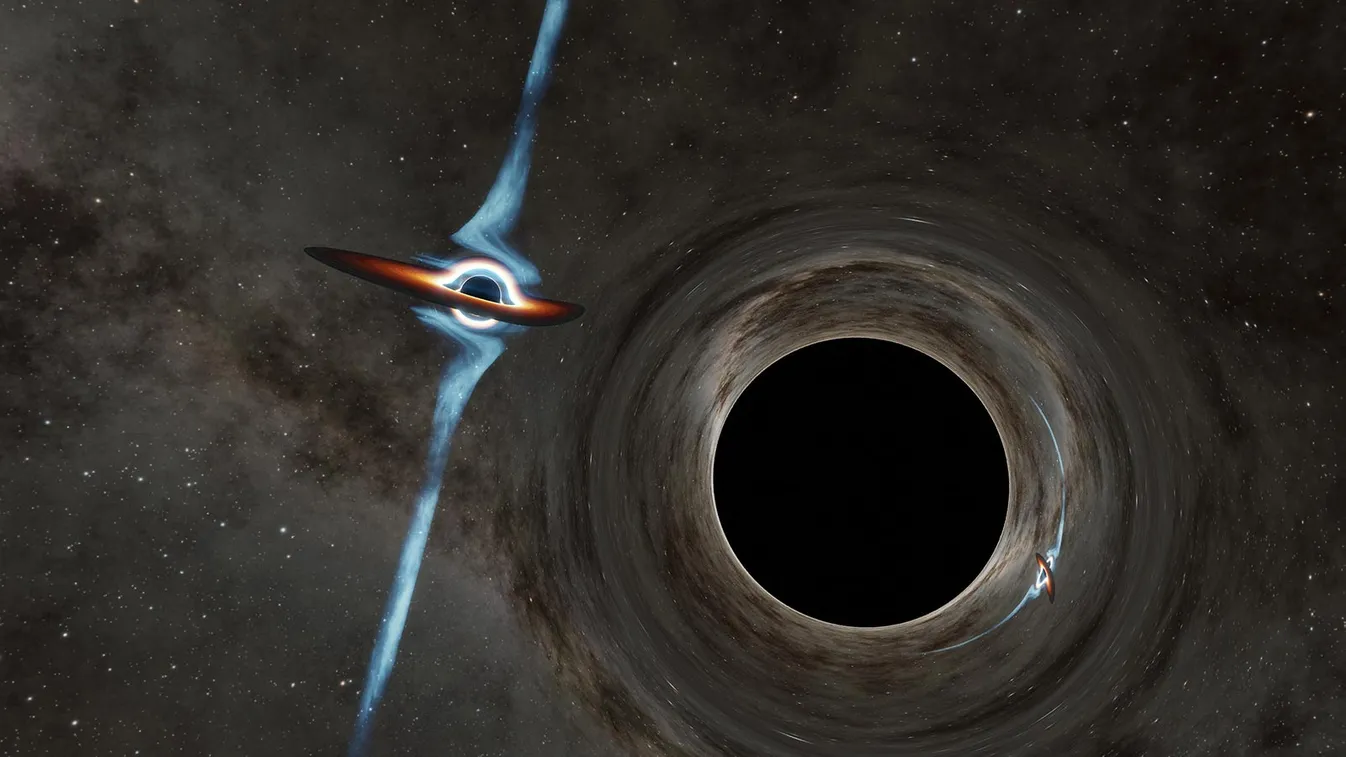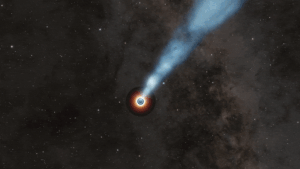*A research team from Purdue University and other institutions found a supermassive double black hole system *, which is one of the only two known such systems. The two black holes orbit each other, and each black hole may weigh as much as 100 million suns. One of the black holes powers a huge jet that moves outward at almost the speed of light. The system is so remote that the visible light seen from earth today was emitted 8.8 billion years ago.

The distance between the two black holes is between 200AU and 2000au, which is 1 / 10 of the distance of the only known supermassive binary black hole system. An Au is the distance from the earth to the sun, about 150 million kilometers.

This close separation is important because the system is expected to eventually merge. This event will release a lot of energy in the form of gravitational waves, which will cause ripples (and oscillations of matter) in space in all directions when they pass by. Finding such a system is also important to understand the formation of galaxies and how massive black holes eventually appear in their centers.
Method description
The researchers stumbled upon the system when they noticed a repeated sinusoidal pattern of changes in radio brightness emission based on data after 2008. The subsequent search of historical data shows that the system changed in the same way from the late 1970s to the early 1980s. If the jet emission of a black hole is affected by the Doppler effect caused by its orbital motion rotating around another black hole, this type of change is exactly what researchers expect. Matthew Lister of Purdue University School of science and his team imaged the system from 2002 to 2012, but the team's radio telescope lacked resolution to solve a single black hole at such a large distance. His imaging data support the idea of double black holes and also provide the direction angle of the jet, which is a key part of the Doppler induced change model in the paper.
Matthew Lister is a professor of physics and astronomy at Purdue University School of science, specializing in the following fields: active galactic nuclei, astrophysical jets and impacts, quasars and BL Lacertae objects, narrow line Seyfert I galaxies, very long baseline interferometry, etc.